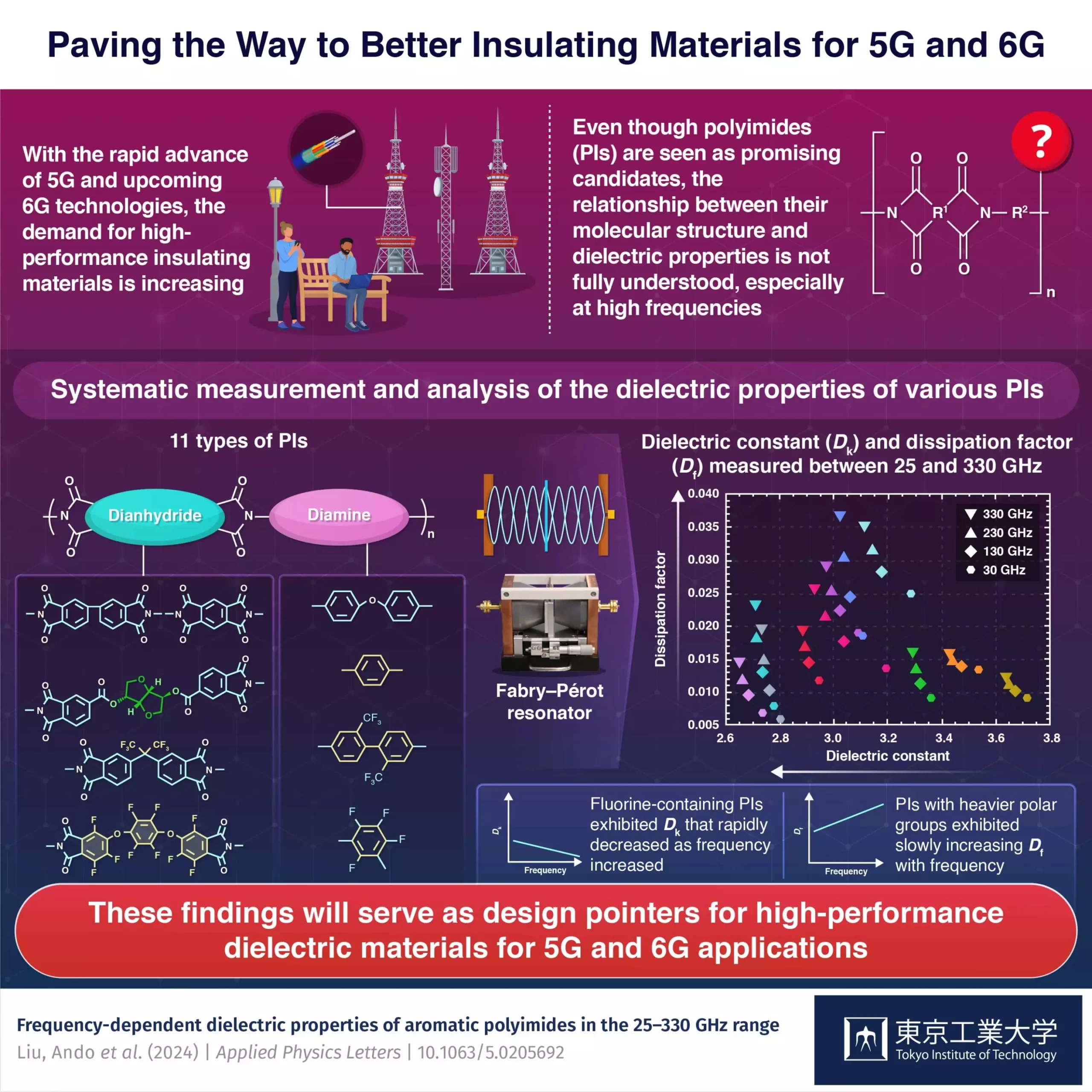With the continuous evolution of 5G technologies, the focus is now shifting towards the development of 6G. One of the major challenges faced in both 5G and 6G is the detrimental effects of operating at extremely high frequencies on wireless communications. Issues such as signal attenuation and interference become more prominent as frequencies reach the terahertz range, making it harder to maintain signal integrity. While glass- and ceramic-based insulating materials are currently the norm, their high cost and complexity in fabrication make them unsuitable for mass-produced devices needed for high-end 6G communication systems.
In a bid to explore alternatives to traditional insulating materials, a research team from Tokyo Institute of Technology delved into the potential of polyimides (PIs) as promising materials for high-frequency operation. Led by Professor Shinji Ando, the team’s study, published in Applied Physics Letters on June 6, 2024, focused on uncovering the correlation between the molecular structure of PIs and their dielectric properties to bridge the existing knowledge gap in this area.
The research team conducted a comprehensive study on 11 different PIs with varying molecular structures to measure and analyze their dielectric properties. Using a Fabry–Pérot resonator, the researchers were able to accurately determine the dielectric constant (Dk) and dissipation factor (Df) of the polyimides in the 110–330 GHz range with minimal dissipation. Both Dk and Df play crucial roles in a material’s ability to store energy efficiently, with lower values being essential for reducing signal loss and maintaining signal integrity at high frequencies.
Key Findings and Implications
The study revealed that PIs with higher fluorine content exhibited lower Dk values, with perfluorinated polyimides demonstrating significantly lower Dk and smaller Df compared to other variants. Additionally, the research highlighted a negative correlation between the increase in Df and the polar fraction of the polymer, indicating the importance of polymer structure in determining dielectric properties. These findings provide valuable insights into the potential of PIs for high-frequency telecommunications applications, paving the way for faster and more reliable communication systems in the terahertz range.
While the current study sheds light on the dielectric qualities of PIs, further research and development efforts will be needed to identify the most suitable types of PIs for advanced telecommunications. Spectroscopic studies in the THz range are recommended to better understand the origins of dielectric responses in different structural PIs at high frequencies. By leveraging these insights, engineers and scientists aim to develop high-performance polymer-based insulating materials that can drive the success of 6G technologies and beyond, ushering in a new era of advanced telecommunications capabilities.


Leave a Reply
You must be logged in to post a comment.